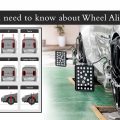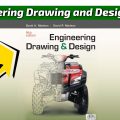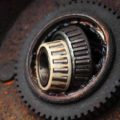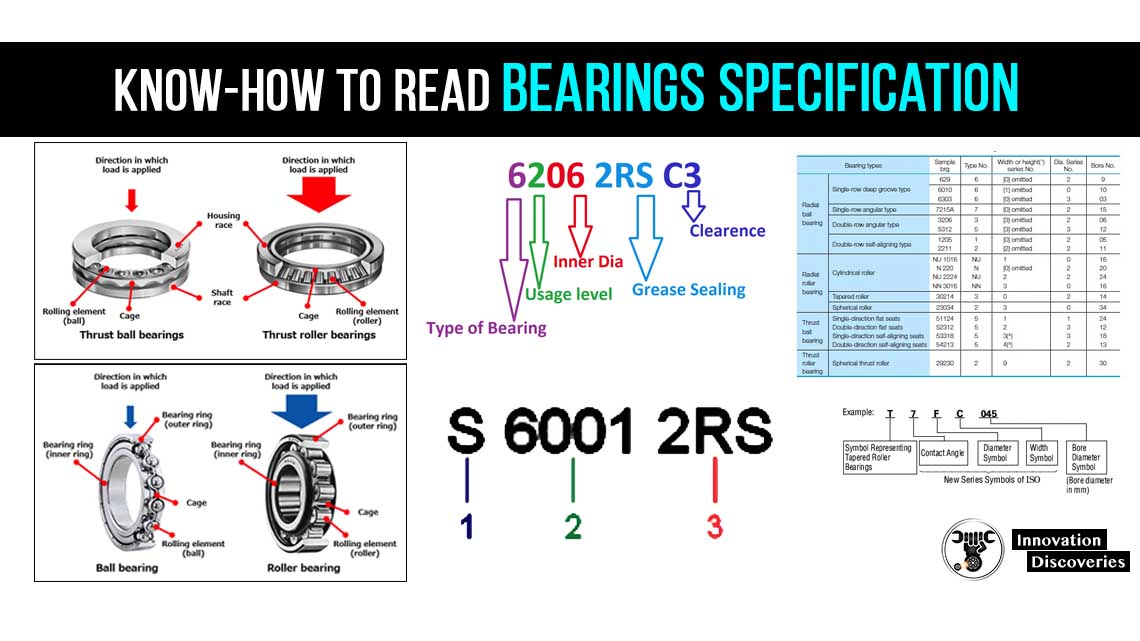
A bearing is a machine element that constrains relative motion to only the desired motion and reduces friction between moving parts.
Each bearing has a specified number which tells about the type and size of the bearing.
Let’s take an example below :
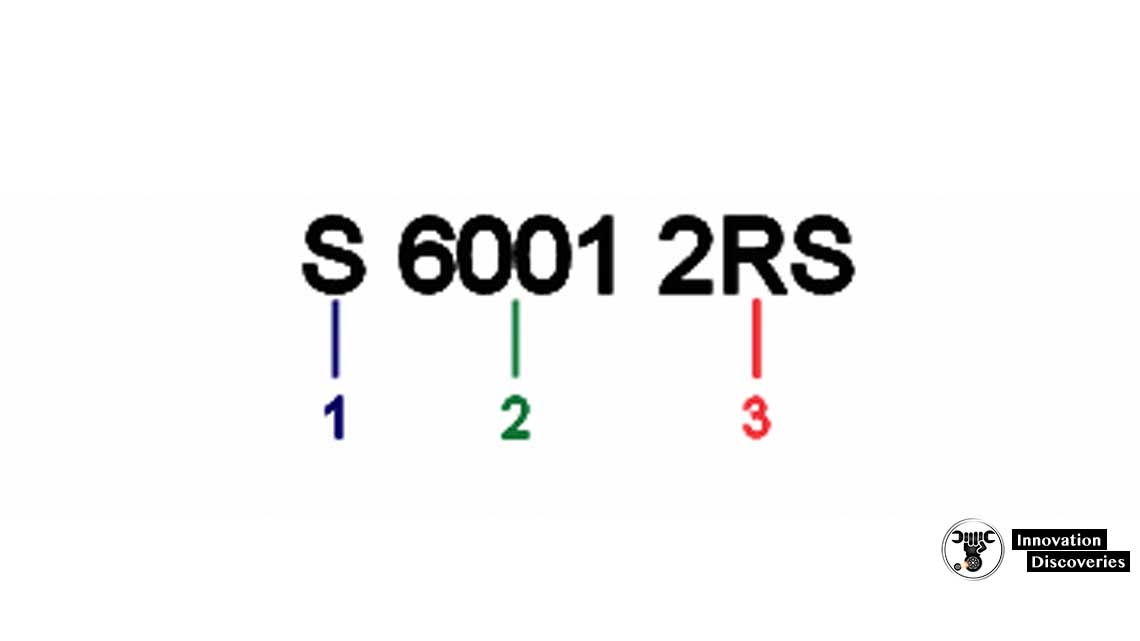
- Prefix :
- Basic Number:
- Suffix
Prefix
| K | Cage with roller elements |
| L | Removable bearing ring R |
| R | Ring with roller set |
| S | Roll body of stainless steel |
| W | Stainless steel deep groove ball bearing |
- Note: Each bearing company may create its own prefixes. e.g. E2. = SKF Energy Efficient bearings
Suffix
| 2 RS | Bearing with a rubber seal on both sides. RS provides a better seal but more rolling friction than 2Z. |
| RS | Bearing with a rubber seal on one side, one side open. |
| 2 Z / ZZ | Bearing with a metal seal on both sides. |
| Z | Bearing with a metal seal on one side, one side open. |
| E | Reinforced Design |
| P2 | Highest precision |
| K | Bearing with taper bore |
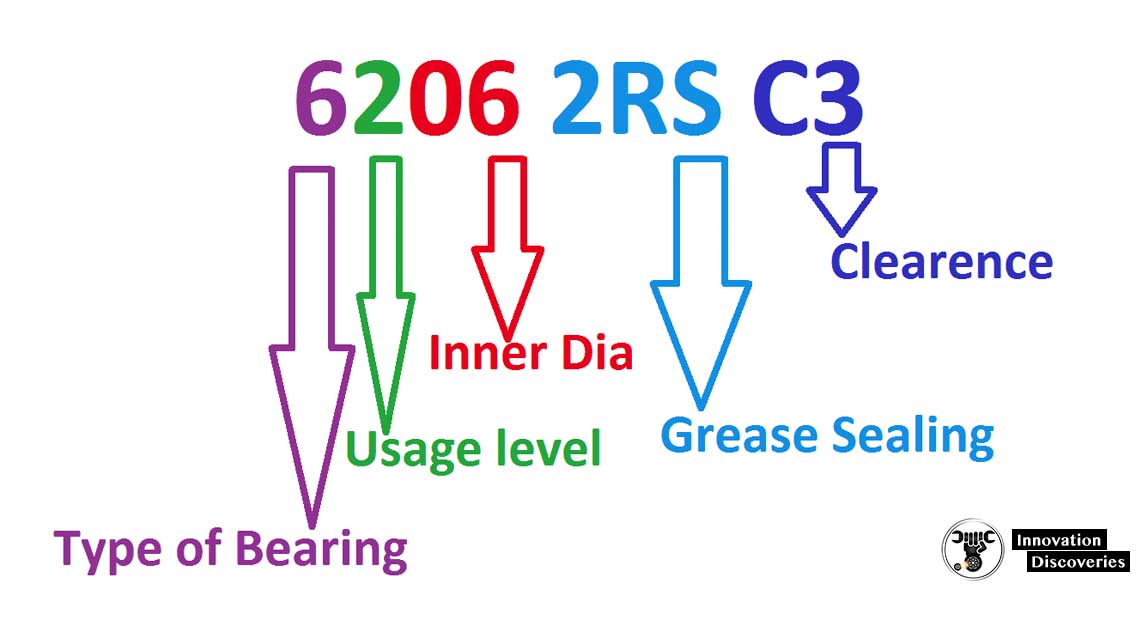
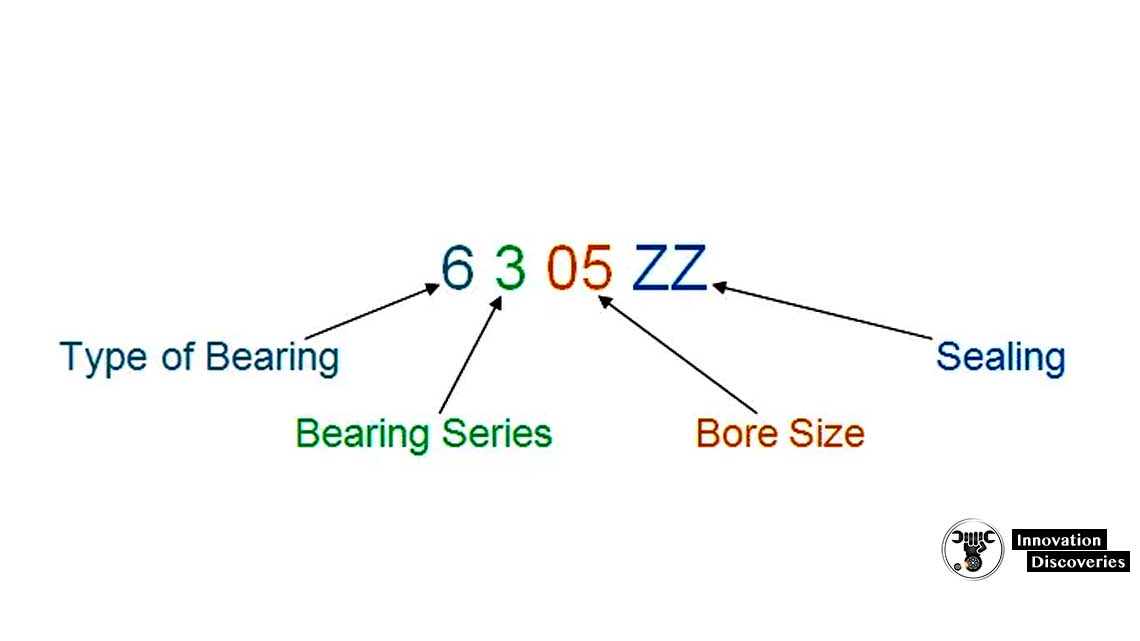
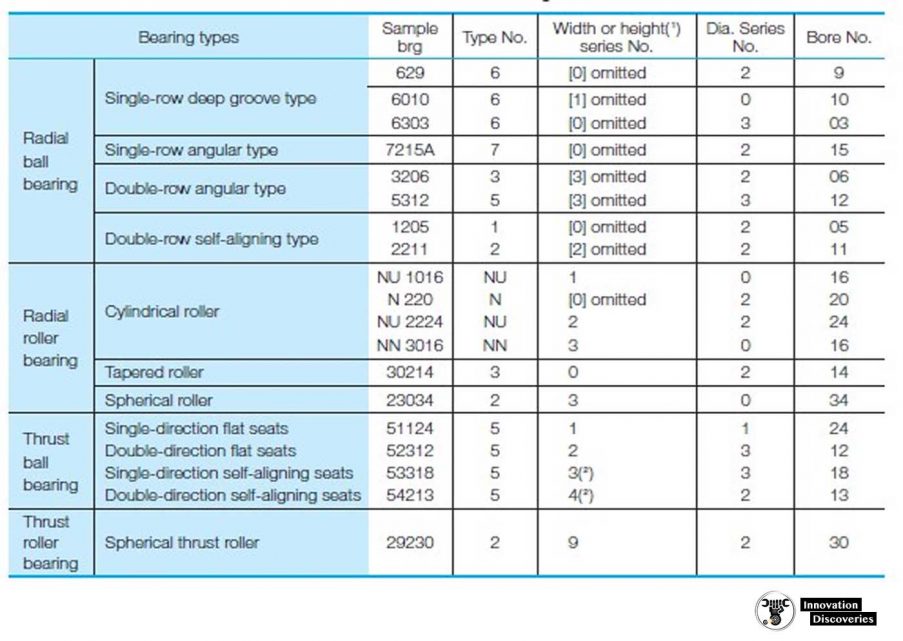
DOWNLOAD PDF:
- BEARING STEEL TECHNOLOGY – 01
- BEARING STEEL TECHNOLOGY | PDF
- SKF BEARING INSTALLATION AND MAINTENANCE GUIDE | PDF
- HOW LONG CAN YOU DRIVE ON A BAD WHEEL BEARING?
- REPLACING WHEEL BEARINGS ON DRIVEN WHEELS
- HOW TO TELL WHICH WHEEL BEARING IS BAD?
Bearing Numbers
The example at the header shows a 6001 2RS bearing. So what does the 6001 actually mean?
- (6)001 – This first number relates to the bearing type, as shown in the table below type 6 is a deeply grooved roller bearing.
Let’s attempt to break it down.
1. Self-Aligning Ball Bearing
- This kind of ball bearing has a spherical outer race, allowing the axis of the bearing to “wander around”. This is important because misalignment is one of the big causes of bearing failure.
2. Barrel and Spherical Roller Bearings
3. Tapered Roller Bearing
- Designed to take large axial loads as well as radial loads.
4. Deep Groove Double-Row Ball Bearing
- Designed for heavy radial loads.
5. Axial Deep Groove Ball Bearing
- Intended for exclusively axial loads.
6. Deep Groove Ball Bearing (Single Row)
- Typical ball bearing. Handles light axial loads as well as radial loads.
7. Single-Row Angular Contact Bearing
- The specific geometry of angular contact bearing raceways and shoulders creates ball contact angles that support higher axial loads
8. Axial Cylindrical Roller Bearings
- Axial cylindrical roller bearings comprise axial cylindrical roller and cage assemblies and shaft and housing locating washers.
- The bearings have particularly small axial section height, have high load carrying capacity and high rigidity, and can support axial forces in one direction.
6(0)01
This second number relates to the bearing series, which reflects the robustness of the bearing.
As you go up the scale below from 9 to 4 the inner and outer race thickness will usually increase along with the ball size, this will be to help cope with the extra load.
9 Very thin section
0 Extra light
1 Extra light thrust
2 Light
3 Medium
4 Heavy
60(01)
The 3rd and 4th digits of the bearing number relate to the bore size of the bearing, numbers 00 to 03 have a designated bore size depending on the number.
00 10mm
01 12mm
02 15mm
03 17mm
While numbers over 03 simply have a bore size which is 5 times that of the 3rd and 4th digit.
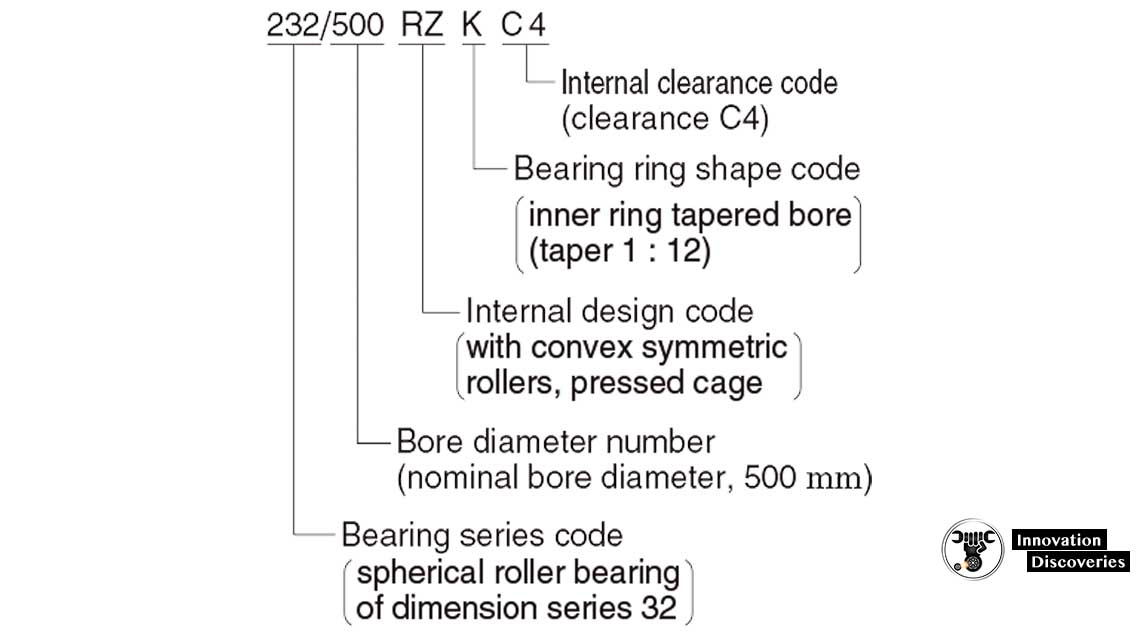
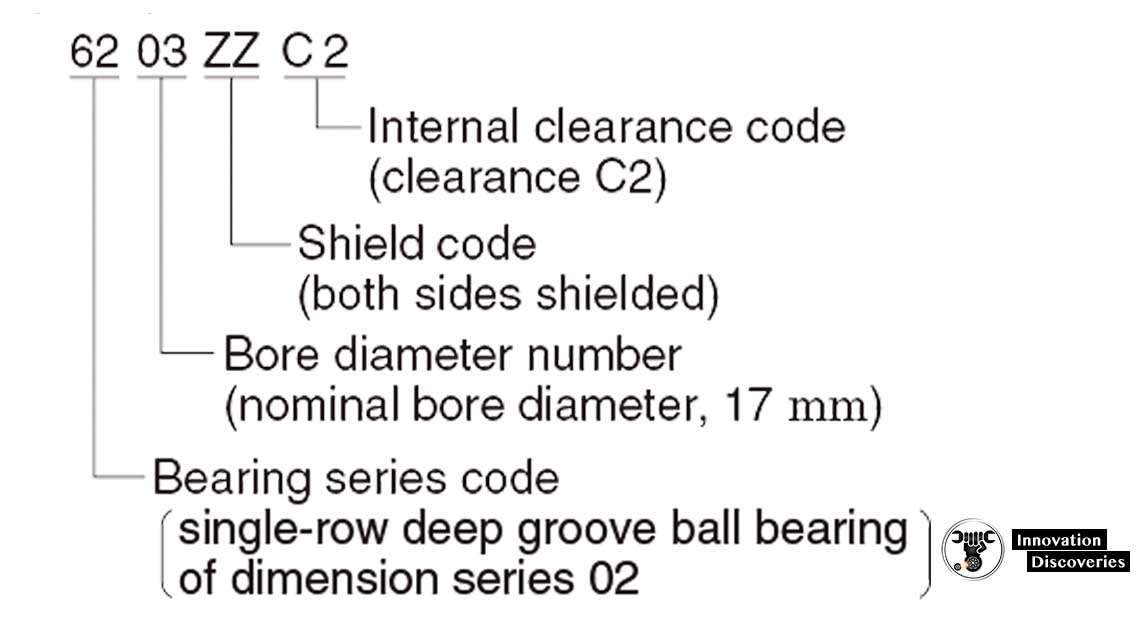
READ: BEARING | TYPES, APPLICATIONS, FAILURES, SELECTION, ADVANTAGES [FULL GUIDE]
Visit Forum
Visit Our Friendly Website


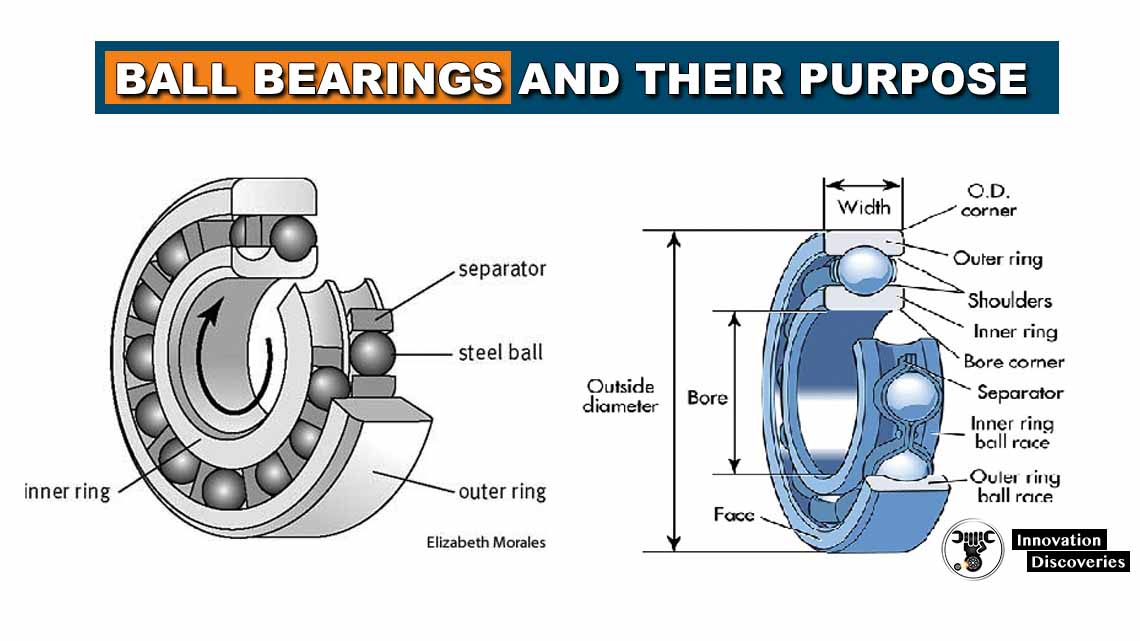
![BEARING | TYPES, APPLICATIONS, FAILURES, SELECTION, ADVANTAGES [FULL GUIDE]](https://innovationdiscoveries.space/wp-content/uploads/2019/10/Bearing1-1024x576.jpg)
